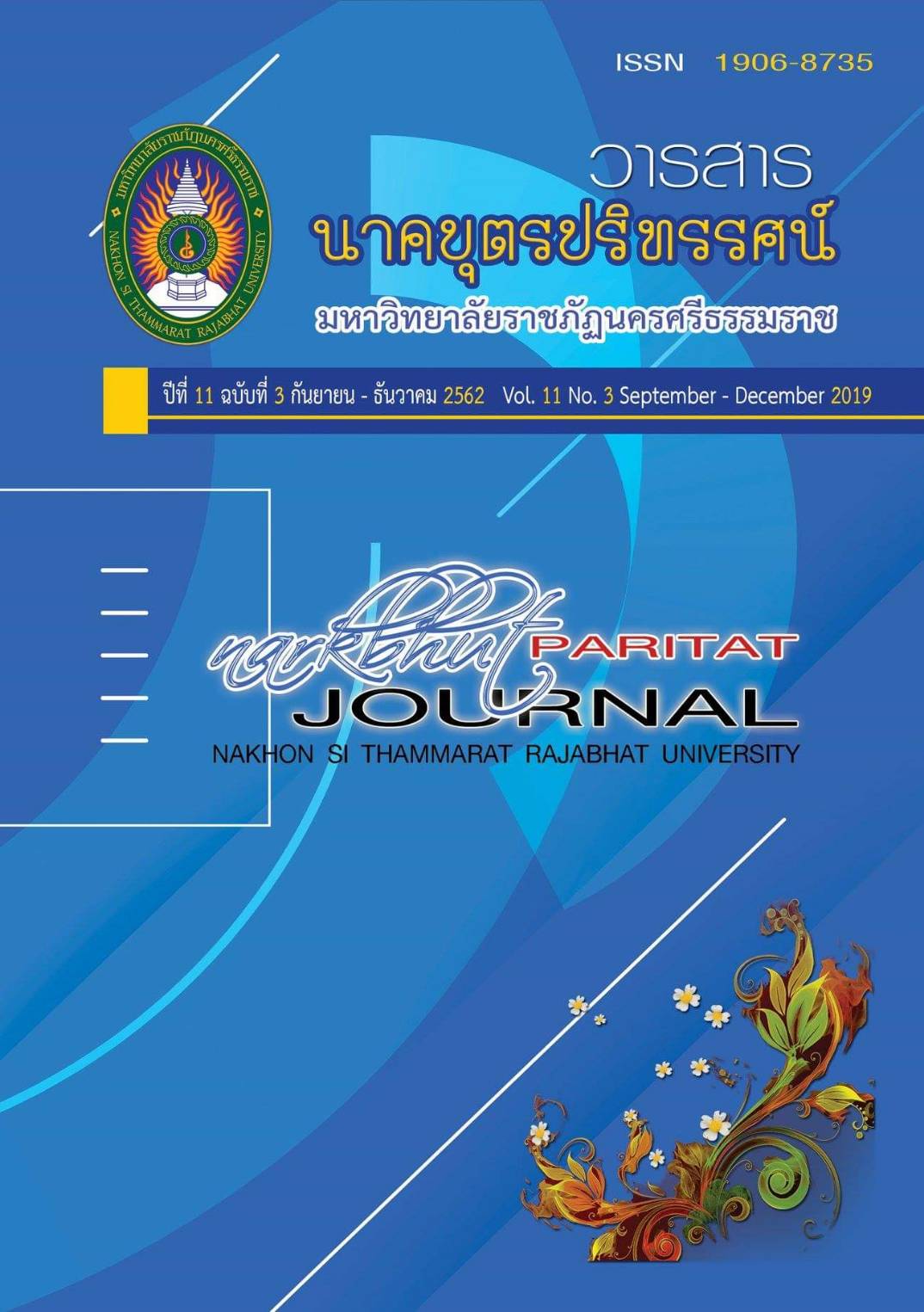Masculine Power Presented through Rape in Harriet Jacobs’ Incidents in the Life of a Slave Girl
Main Article Content
Abstract
Danger of sexual assault has been directly and indirectly warned as one of crucial problems of women and girls through media in Thailand daily. According to news reported about this kind of crime, mostly women and girls are the main target of it. All women and girls insecurely live in this world. This gender-based violence reflects people’s attitudes which pass from time to time toward women’s value in society. This research aims to study the use of men’s masculine power in the form of sexual violence over women in a slave narrative literature, Incidents in the Life of a Slave Girl by Harriet Ann Jacobs. The result showed that Jacobs’ Incidents in the Life of a Slave Girl directly portrays sexual coercion and injustice that female slaves had to face under slavery to the world. Masculinity of men was exercised through fierce and coercive sexual actions on slave women as the way to express their power. In addition, men’s violence toward women was a relation to gender and power. Power was an individual possession. Sex roles, the influence of patriarchal ideology, income and status inequalities allowed men to exercise their power, violence, and violation.
Article Details
References
Brent, L. (1861). Incidents in the Life of a Slave Girl. Boston: Thayer & Eldridge.
Brownmiller, S. (1975). Against Our Will: Men, Women and Rape. New York: Simon and Schuster.
Coryell, J., & Faires, N. (2012). A History of Women in America. New York: McGraw-Hill.
Davis, A. (1982). Rape, Racism and the Myth of the Black Rapist. Women, Race and Class (pp. 173-
201). N,p.: N.p.
Dworkin, A. (1999). Women in the Public Domain: Sexual Harassment and Date Rape. In Marilyn
Pearsall (Ed), Women and values. In recent feminist philosophy (pp. 221-231).
Belmont: Wadsworth Publishing.
Gruerholz, E. (1994). Gender Socialization and Communication: The Inscription of Sexual Harassment
in Social Life. In Bingham, S. G. (Ed.), Conceptualizing Sexual Harassment as Discursive
Practice (pp. 33-44). London: Praeger.
Hine, D. C., Hine, W. C., & Harrold, W. C. (2000). The African-American Odyssey. New Jersey: Prentice- Hall Inc.
Hooks, B. (1999). Black Women: Shaping Feminist Theory. In Pearsall, M. (Ed.), Women and
Values: Reading in Recent Feminist Philosophy (3rd ed)., pp.25-32. Belmont:
Wadsworth Publishing.
. (1999). Talking Back.Women: Images & Realities. California: Mayfield Publishing.
Kell, L. & Radford, J. (1996). ‘Nothing Really Happened’: The Invalidation of Women’s Experiences
of Sexual Violence.In M. Hester, L. Kelly, & J.Radford (Ed.), Women, Violence, and Male power: Feminist Activism, Research and Practice (pp.19-33). Buckingham: Open University Press.
Kesselman, A., Schniedewind, N., & McNair, D. L. (1999). Women Images and Realities: a Multicultural
Anthology. California: Mayfield Publishing.
Kromkowski, J. (1997). A. Race and Ethnic Relations 1997/98. Guilford: Dushkin/McGraw-Hill.
Mauro-Cochrane, J. (1993). Self-Respect and Sexual Assault. Florida: HIS and TAB Books.
Nussbaum, M. C. (1999). Sex and Social Justice. Oxford: Oxford University Press.
Powerless. (2005). Oxford Advanced Learner’s Dictionary. 7th ed. Oxford: Oxford University Press.
Ross, M. B. (2002). Race, Rape, Castration: Feminist Theories of Sexual Violence and Masculine
Strategies of Black Protest. In J. K. Gardiner (Ed.), Masculine Studies and Feminist Theory: New Direction (pp. 305-340). New York: Columbia University Press.
Thao, M. K. (1999). Sins of Silence. Women: Images & Realities. (pp.17-18). California: Mayfield
Publishing.
Yaikong, K. (2004). An Analysis of Racial Prejudice in Paul Laurence DunBar’s “The Lynching of Jube
Benson.” (Master Dissertation). Retrieved from Srinakharinwirot University.


